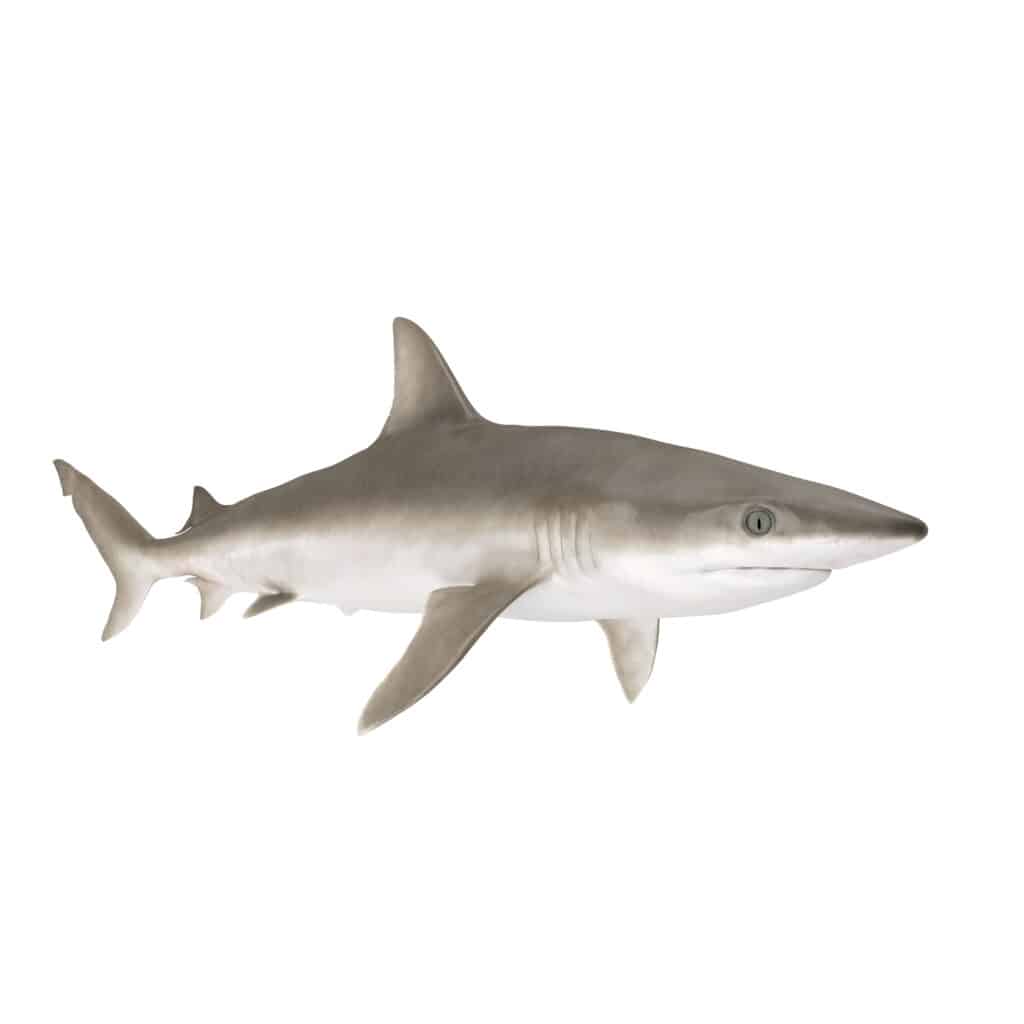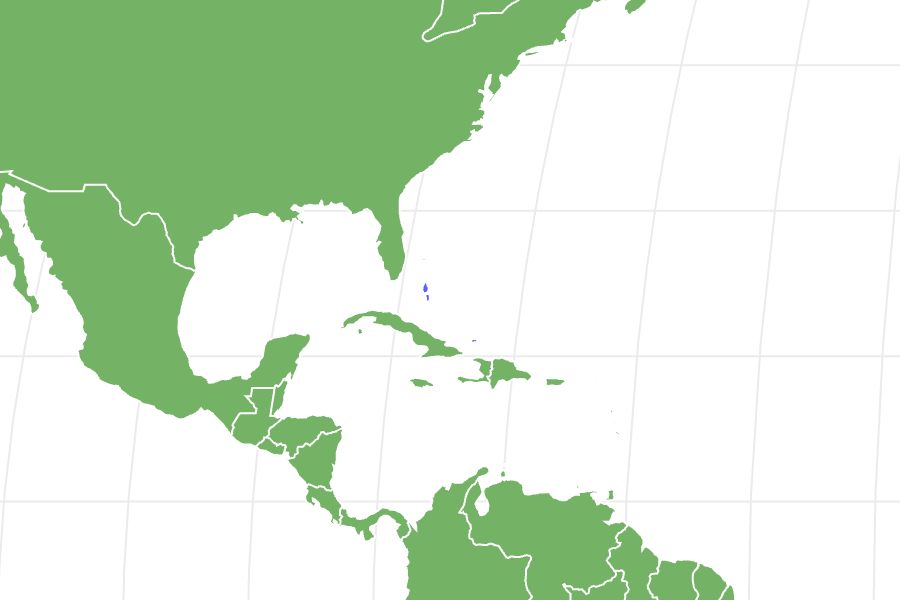Blacknose Shark
Carcharhinus acronotus
When threatened, Blacknose sharks raise their head, arch their back, and lower their pectoral fins.
Advertisement
Blacknose Shark Scientific Classification
- Kingdom
- Animalia
- Phylum
- Chordata
- Class
- Chondrichthyes
- Order
- Carcharhiniformes
- Family
- Carcharhinidae
- Genus
- Carcharhinus
- Scientific Name
- Carcharhinus acronotus
Read our Complete Guide to Classification of Animals.
Blacknose Shark Conservation Status
Blacknose Shark Facts
- Group Behavior
- Social
- Solitary/Group
- Fun Fact
- When threatened, Blacknose sharks raise their head, arch their back, and lower their pectoral fins.
- Biggest Threat
- Humans
- Most Distinctive Feature
- dark blotch at the tip of the snout
- Gestation Period
- 1-2 years
- Diet
- Carnivore
- Lifestyle
- Social
- Group
- Favorite Food
- Pinfish, Sheephead porgy
- Common Name
- Blacknose shark
- Migratory
- 1
Blacknose Shark Physical Characteristics
- Color
- Grey
- Yellow
- White
- Green
- Skin Type
- Scales
- Lifespan
- 16.5-19 years
- Length
- 3-4 feet
- Age of Sexual Maturity
- 4-7 years
- Venomous
- No
- Aggression
- Low
View all of the Blacknose Shark images!
“Blacknose sharks have a black or dusky blotch at the tip of their snout”
Summary
The Blacknose shark is a type of Requiem shark species and inhabits the tropical and subtropical waters of the Western Atlantic ocean. The species got its name from the dark blotch found on the tip of its snout, which is more noticeable in young blacknose sharks but disappears as they grow older. Juvenile blacknose sharks are typically found in shallow water, but the adults venture deeper into depths of over 30 feet.
4 Blacknose Shark Facts
- No inner dorsal ridge: Blacknose sharks don’t have an interdorsal ridge, but they do have small pectoral fins.
- Limited distribution: They are only found in the Western Atlantic Ocean
- Threat display: They are known to perform a threat display when they encounter humans, but there is no record of human attacks.
- Short lifespan: This shark species has a short lifespan of approximately ten years as they mature early and breed in alternate years.
Blacknose Shark Classification and Scientific name
The scientific name of the blacknose shark is Carcharhinus acronotus. It belongs to the order Carcharhiniformes (ground sharks), which is the largest order of sharks with over 270 species and eight families. Blacknose sharks are Requiem sharks. These are sharks of the family Carcharhinidae, known for their migratory and ability to give birth to live young.
Blacknose Shark Appearance

The blacknose shark is a type of shark that’s less aggressive
©3DMI/Shutterstock.com
Blacknose sharks have small and slender bodies with long rounded snouts. Their appearance resembles that of other Requiem sharks. The tip of their snout has a characteristic black or dusky spot from which it gets its name. The spot is more distinct in juvenile sharks. A well-developed flap of skin covers the front of each nostril, which defines the inflow and outflow of air. Like other sharks in their family, the Blacknose has five pairs of gills which are quite short.
This shark has a pale greenish or yellowish-gray color. The upper jaw of this has about 12-13 triangular and oblique-shaped teeth, while the lower jaw features 11 or 12 rows of teeth. Rows of teeth are arranged on either side of the jaws, with one or two in the middle.
At maturity, males grow to a length of about 108 to 112cm. Females can grow to 103 to 118cm. How big they get depends on their location. The maximum length ever recorded is 200 cm, while the maximum weight is 18.9kg.
Distribution, Population, and Habitat

Blacknose sharks,
Carcharhinus acronotus, are social animals but are selective in their associations.
©iStock.com/ Ryan Cake
Blacknose sharks don’t have a widespread distribution. Their presence is mostly limited to the Western Atlantic Ocean between North Carolina and Southern Brazil. They’re also present in the Caribbean Sea in the Bahamas and the Gulf of Mexico.
Because Blacknose sharks have commercial and recreational significance, human exploitation threatens their population. In 2009, the United States National National Oceanic and Atmospheric Administration declared them overfished and proposed measures to protect their population.
In Brazil and the Caribbean, population trends suggest a decline in the shark’s population. However, fisheries are still able to catch a good number of adults. Due to this population decline, the IUCN has placed the species in the Near-threatened category.
Where to find: Blacknose Shark and How to Catch Them
This shark species most commonly lives in the tropical and warm temperate waters of the Northern Atlantic. Naturally, they’re inshore species-with a large number of them living around continental shelves. Male and female populations are usually found separately except during mating season. They’re also segregated by size, with the juveniles typically found in shallow waters while the adults venture deeper into depths of about 18-64 m.
Predators and Prey
Blacknose sharks are small, fast swimmers with strong teeth and powerful jaws. This puts them in a very good spot in the food chain. They prey on small bony fish, and they do not have a lot of natural enemies.
What eats Blacknose sharks?
In the wild, larger sharks such as dusky sharks may prey on blacknose species. The species has been known to demonstrate a sort of “threat display,” which they use to scare off attackers.
What do Blacknose sharks feed on?
Blacknose sharks have a widely varied diet consisting of various small bony fish such as croakers, pinfish, anchovies, porcupinefish, and spiny boxfish. They may also hunt octopuses and other cephalopods. Large members of this species have been known to compete with and snatch food from bigger sharks like the Caribbean reef shark due to their ability to swim very fast. They may form large hunting groups to attack large schools of mullet and anchovies.
Reproduction and Lifespan
Like other Requiem sharks, the blacknose is viviparous. That means they give birth to live young that develop inside the mother and take nourishment from her. Their mating season is between late June and early July of each year. However, their reproductive cycle depends on the location where they’re found. While blacknose sharks in the Gulf of Mexico reproduce once a year, those in the Atlantic do so once in 2 years.
Young blacknose sharks are born after 10-11 months of gestation. About 3-6 are born per litter. But four is the most common number. Young blacknose sharks measure about 43 to 51cm at birth. They remain in the shallow waters until they’re mature enough to venture into the deep. A recent study on blacknose in the Gulf of Mexico sharks in revealed that their average lifespan is a maximum of 11.5 years for females and 9.5 years for males.
Blacknose Shark In Fishing And Cooking
Due to their small size, blacknose sharks are not commercially significant in the United States. However, in places like Mexico, they’re consumed locally by humans. In the Campeche area, the blacknose is prepared as a regional dish called pan de cazón. Pan means “bread,” and Cazón is meat from a little shark. Interestingly, the recipe does not require bread. Instead, the tortillas that are cooked with it serve the function of bread because they acquire a taste and texture similar to bread after cooking.
This shark species is also important to recreational shark anglers who enjoy struggling with the fish on a light tackle. It is also available all year round, including seasons when other sharks are no longer available.
Blacknose Shark Population
This species of shark is decreasing in numbers and is listed as near threatened by the IUCN Redlist of Threatened Species.
View all 285 animals that start with BBlacknose Shark FAQs (Frequently Asked Questions)
Where are Blacknose sharks found?
Blacknose sharks are mostly found in the Western Atlantic Ocean in the region between Southern USA to the South of Brazil. They occupy coastal continental shelves, usually at a depth of about 60 to 210 ft.
How big does a Blacknose shark get?
At maturity, Blacknose sharks may reach lengths of over 4 feet or approximately 5 feet. Females are typically larger than males. The maximum weight on record is 18.9 kg.
Can you eat blacknose shark?
Yes, Blacknose sharks can be eaten. In some parts of Mexico, meat from this shark is used to prepare a delicacy known as pan de cazón.
Thank you for reading! Have some feedback for us? Contact the AZ Animals editorial team.

















